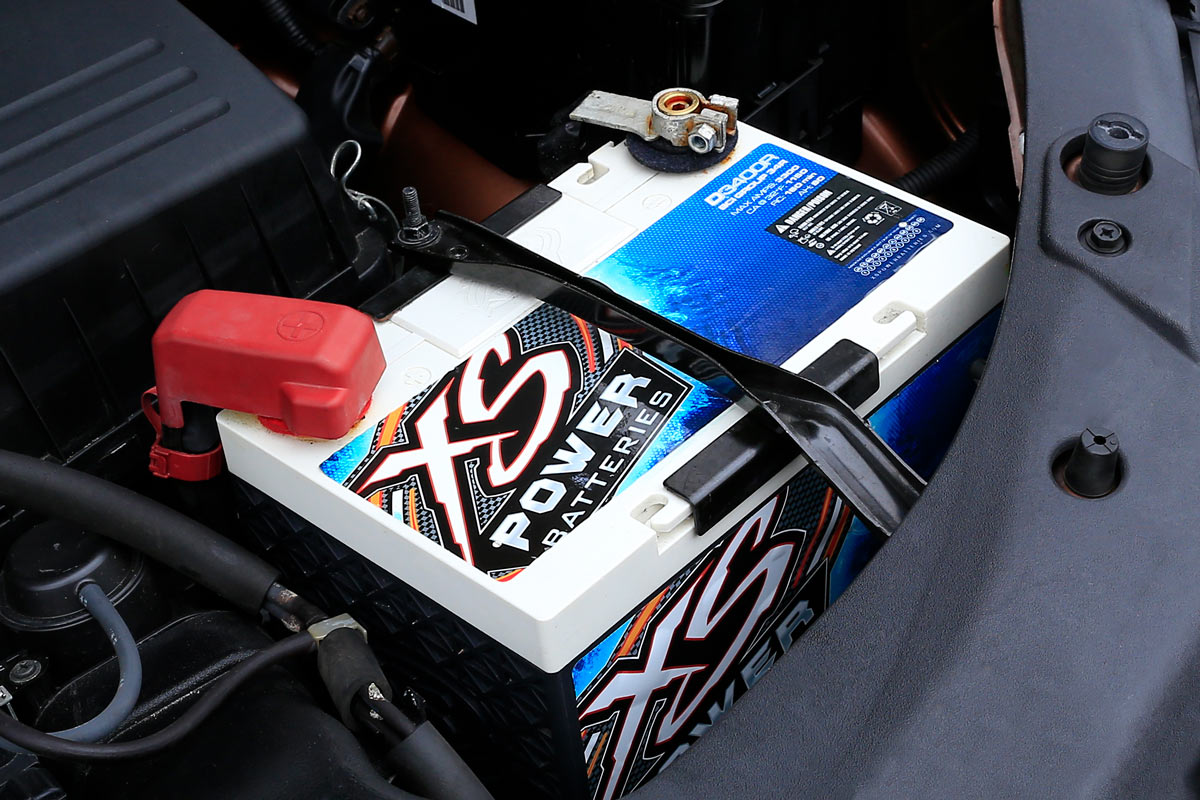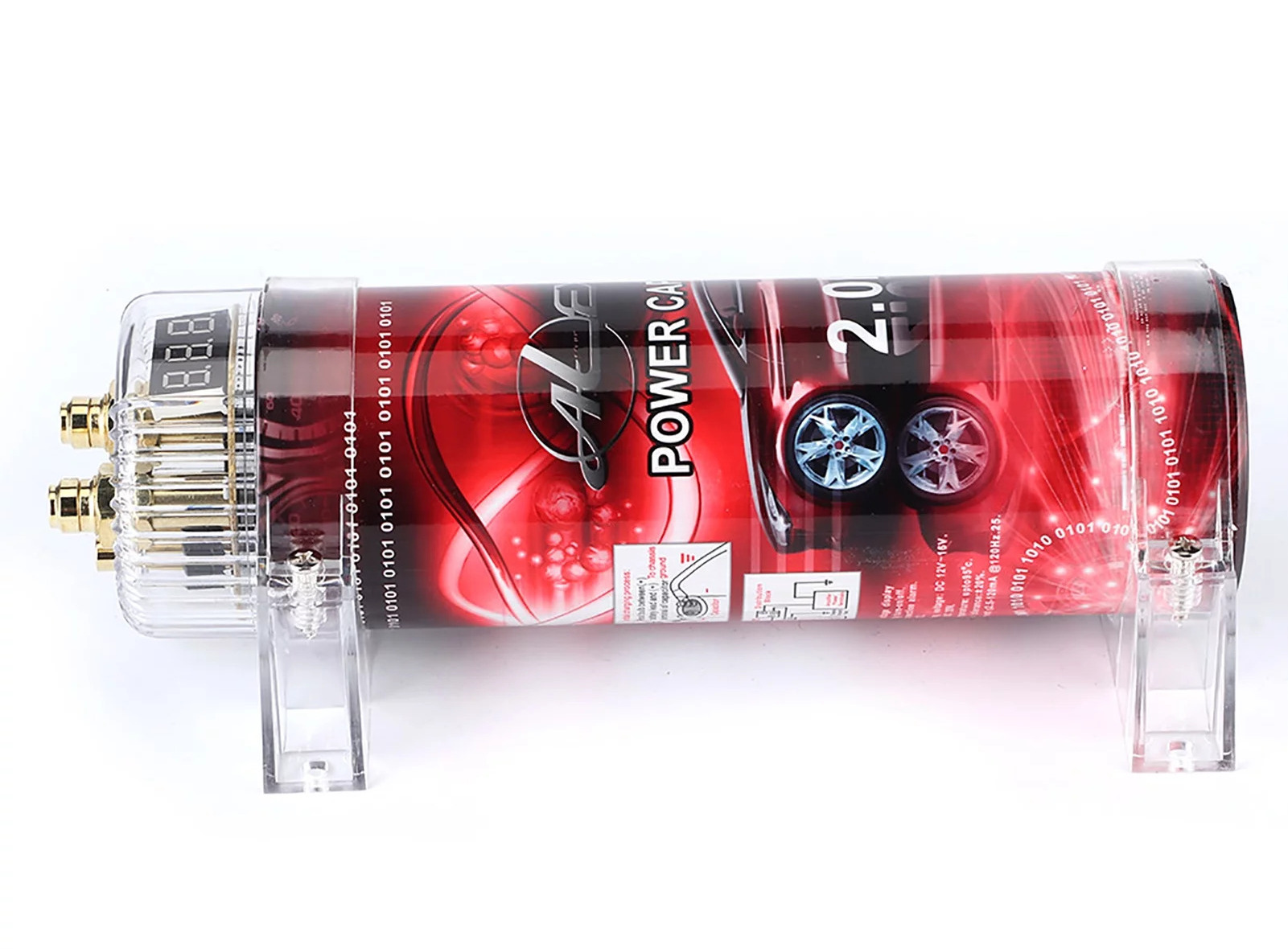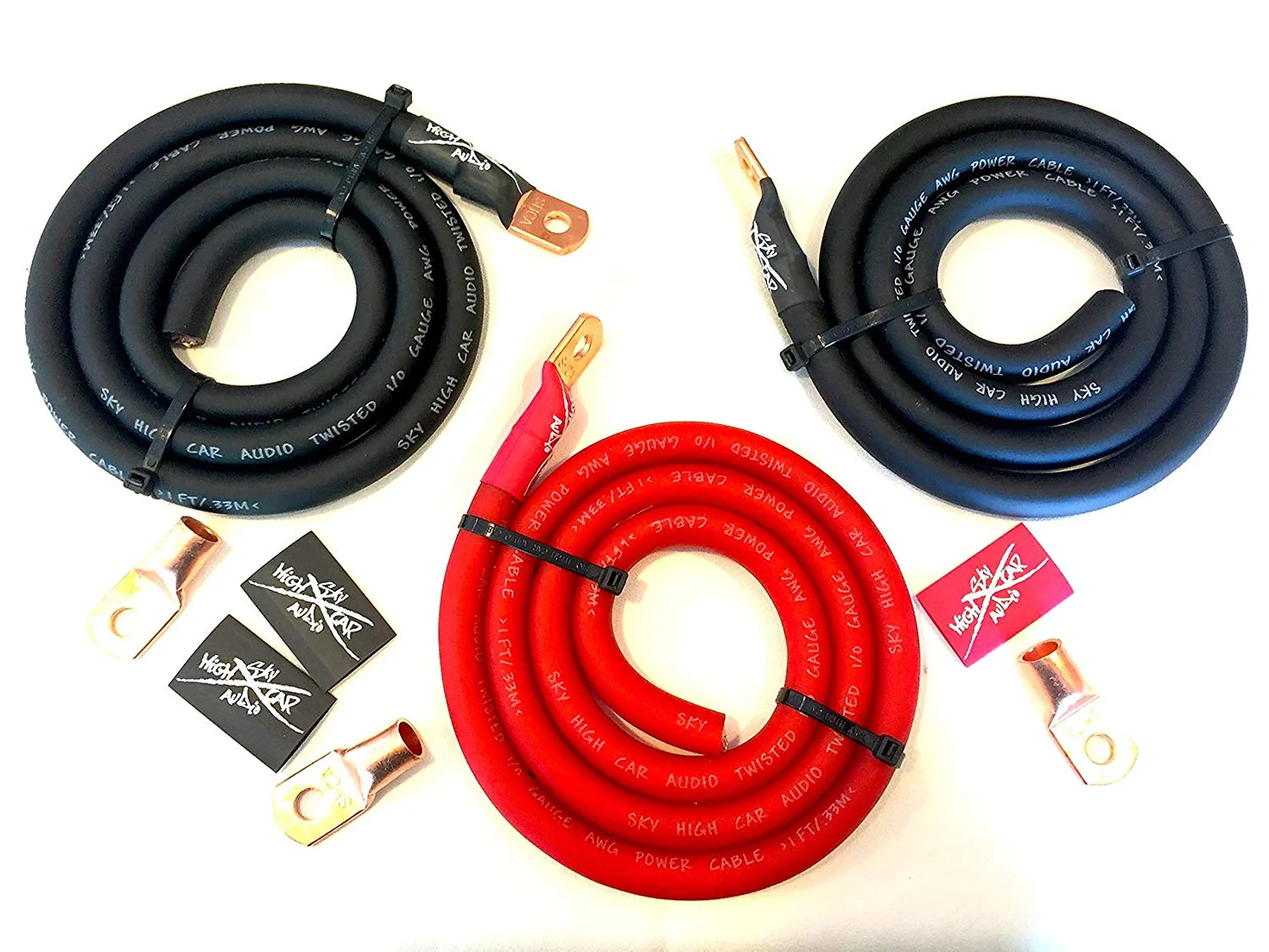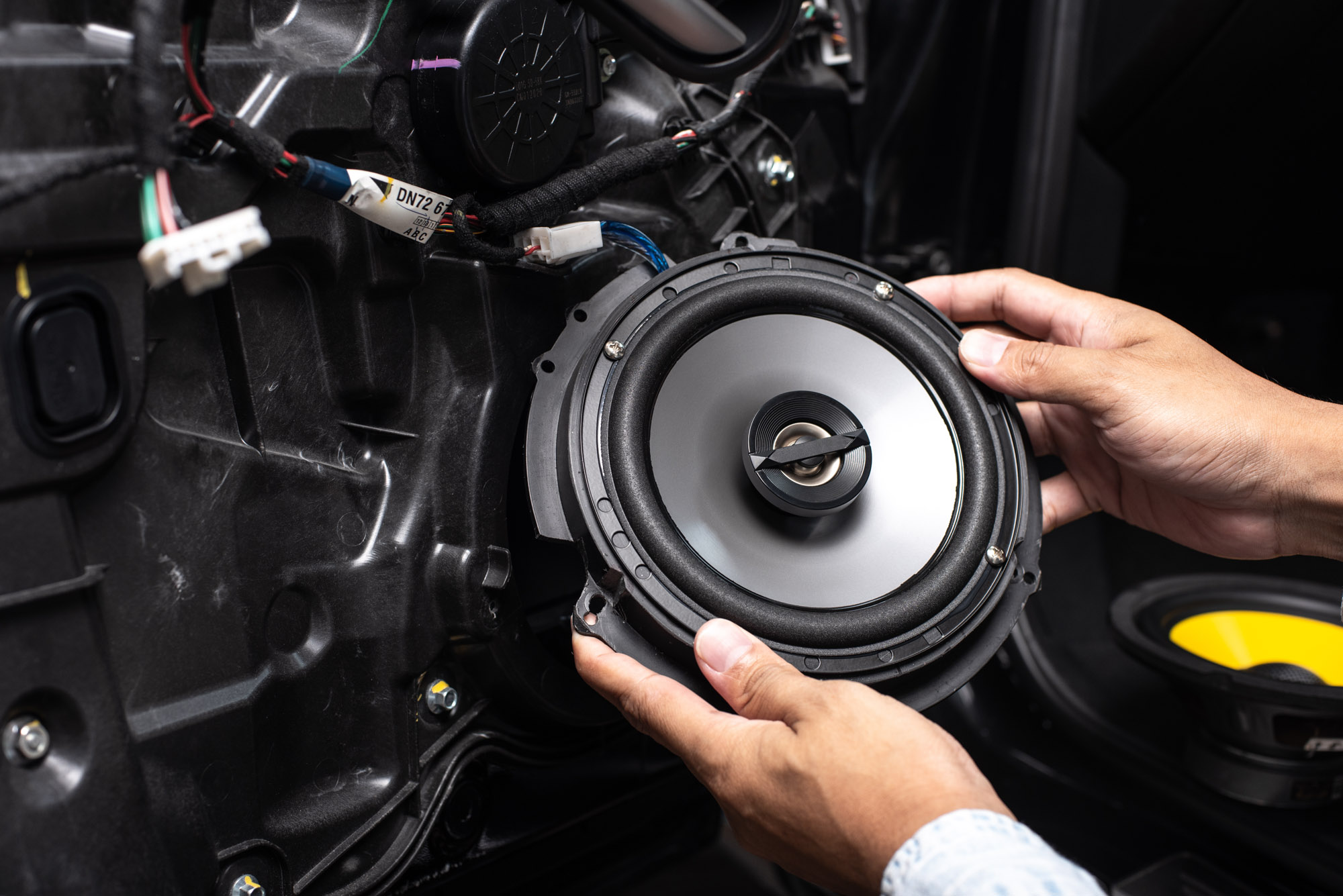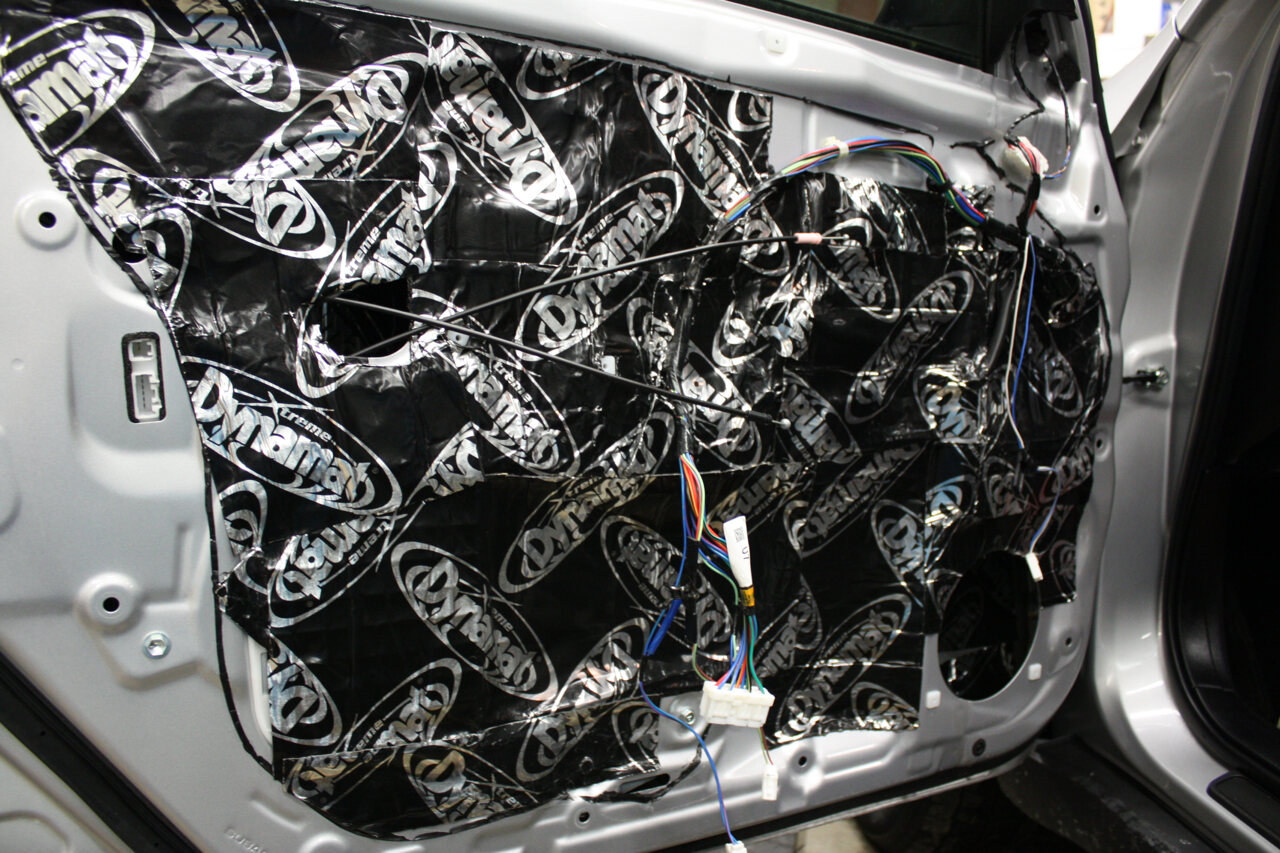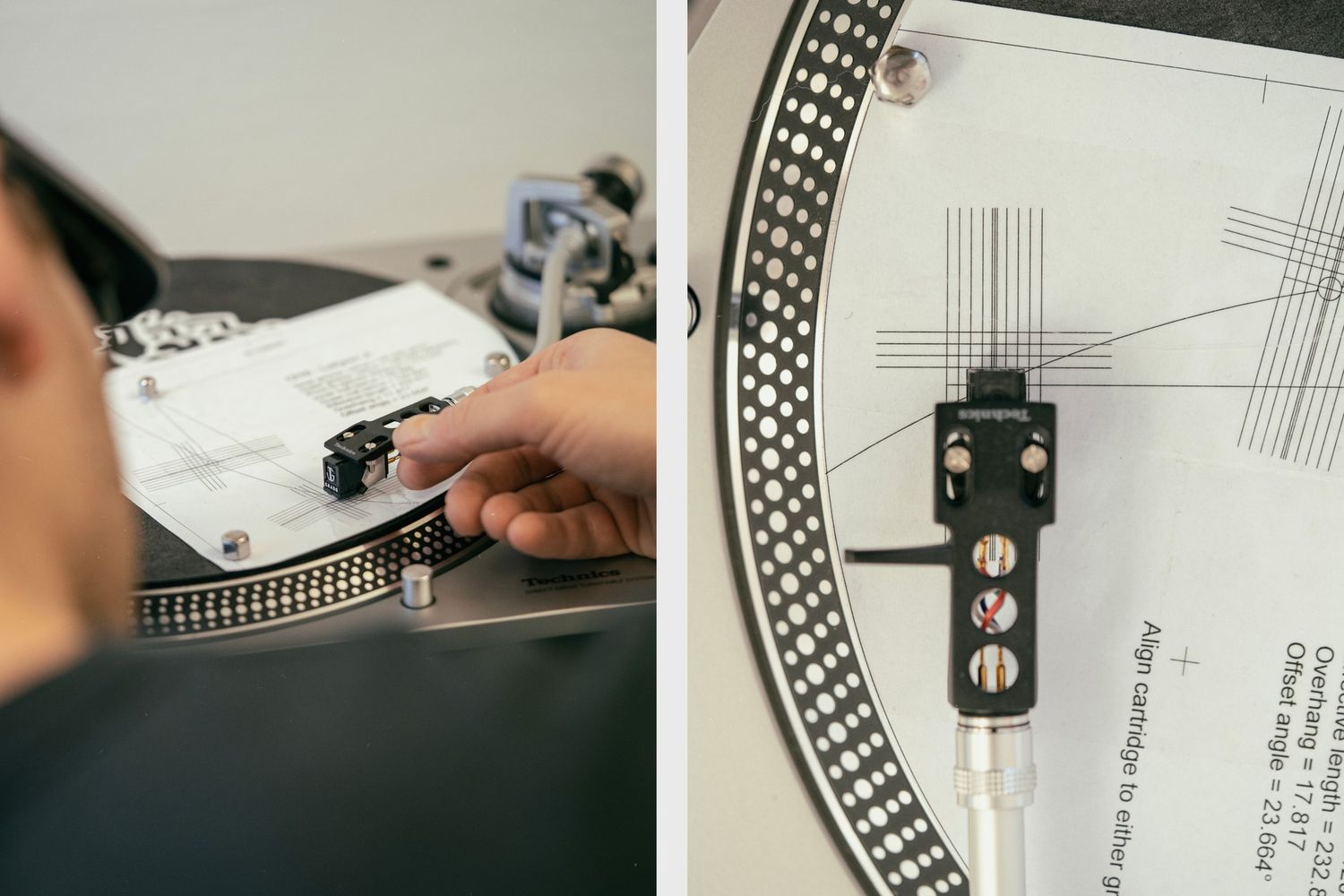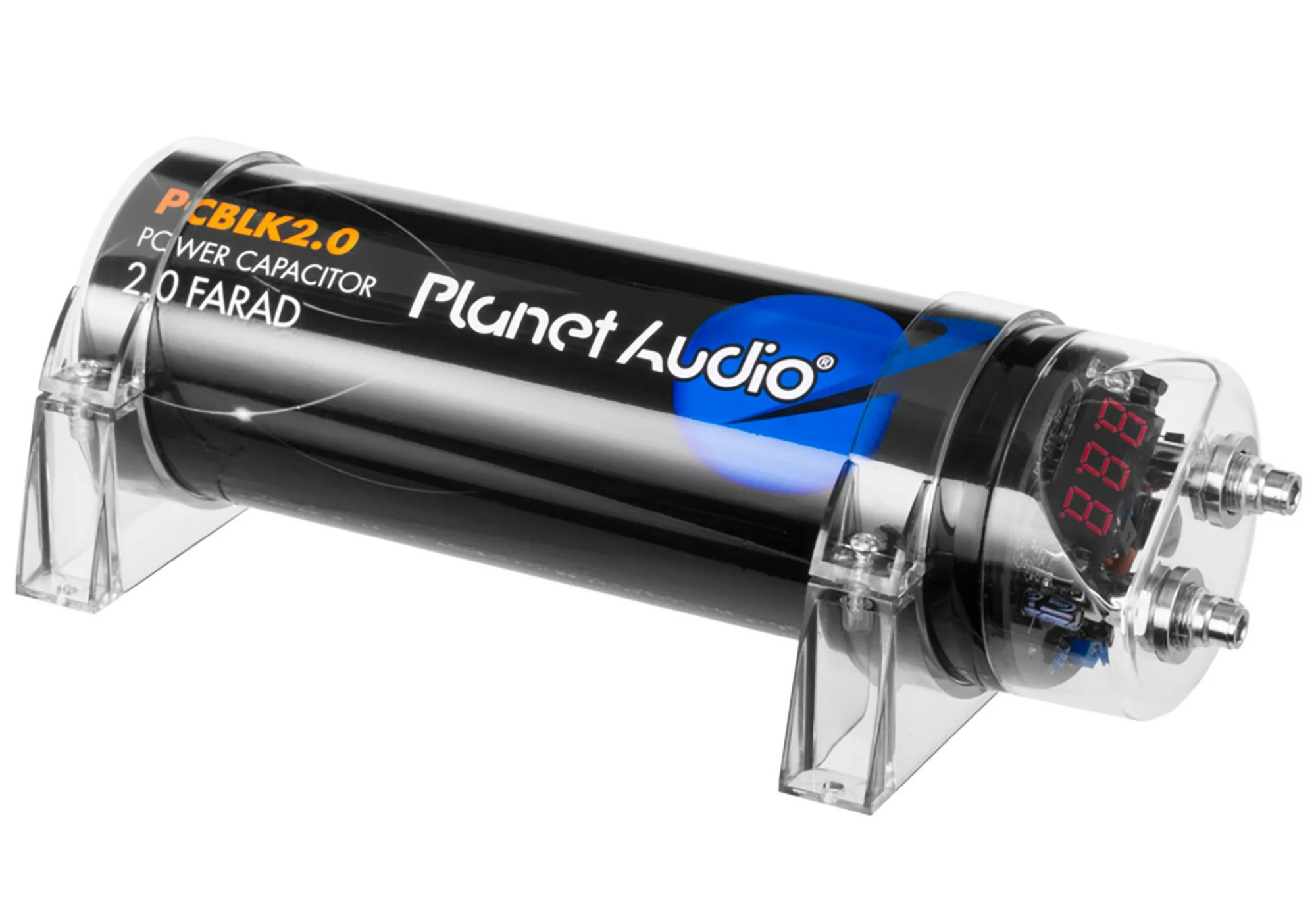Home>Devices & Equipment>Car Audio>What Is Time Alignment Car Audio


Car Audio
What Is Time Alignment Car Audio
Published: February 6, 2024
Discover the importance of time alignment in car audio systems and how it enhances your listening experience. Get tips and insights on achieving optimal time alignment for your car audio setup.
(Many of the links in this article redirect to a specific reviewed product. Your purchase of these products through affiliate links helps to generate commission for AudioLover.com, at no extra cost. Learn more)
Table of Contents
- Introduction
- Understanding Time Alignment
- Importance of Time Alignment in Car Audio
- Techniques for Time Alignment in Car Audio
- Digital Time Alignment
- Analog Time Alignment
- Factors to Consider for Time Alignment in Car Audio
- Benefits of Time Alignment in Car Audio Systems
- Common Challenges and Solutions in Time Alignment
- Conclusion
Introduction
Welcome to the world of car audio, where the power of music meets the thrill of the open road. Whether you’re a daily commuter or a road trip enthusiast, having a high-quality audio system in your car can make all the difference in your driving experience. One crucial aspect of achieving optimal sound performance in your car audio system is time alignment.
Time alignment is the process of adjusting the sound output of each speaker in your car audio system to ensure that the sound waves reach your ears simultaneously. When sound waves from different speakers reach your ears at different times, it can result in phase cancellation and a loss of audio clarity. Time alignment helps to compensate for these delays, creating a more natural, immersive listening experience.
Think about it: as you sit behind the wheel, the speakers in your car are positioned at different distances from your ears. The sound waves emitted by each speaker will take varying amounts of time to reach you, depending on their distance. Without time alignment, this delay can lead to distortion, muddy sound reproduction, and a lack of audio definition.
Time alignment is particularly important in car audio systems because of the unique acoustic challenges presented by the vehicle’s interior. The interior of a car is a confined space with reflective surfaces and intrusive ambient noise, causing sound waves to bounce around and interfere with each other. Time alignment helps to mitigate these issues, ensuring that the sound from each speaker arrives at your ears in perfect synchronization.
By optimizing the time alignment in your car audio system, you can achieve a balanced and accurate soundstage, with vocals, instruments, and other audio elements appearing in their correct positions. This means that the singer’s voice will be centered, the guitars will emanate from the appropriate locations, and the soundstage will have depth and width that mimic a live performance.
In the next sections of this article, we will delve deeper into the concept of time alignment in car audio, exploring its importance, techniques, benefits, and challenges. So, buckle up and get ready to take your car audio experience to the next level!
Understanding Time Alignment
Before diving into the intricacies of time alignment in car audio, let’s start by understanding what it means and why it is essential. Time alignment, as the name suggests, is the process of aligning the arrival time of sound waves from different speakers to ensure they reach the listener’s ears simultaneously.
When sound waves from multiple speakers reach our ears at different times, due to the varying distances between the speakers and our ears, it can result in phase cancellations and a loss of audio quality. This phenomenon is known as “smearing.” Time alignment helps to correct these delays, ensuring that the sound waves arrive in perfect synchronization.
To understand the importance of time alignment, let’s consider a scenario. Imagine you’re sitting in the driver’s seat, and you have speakers positioned in the front and rear of your car. The rear speakers are closer to your ears than the front speakers due to their proximity. Without time alignment, the sound from the rear speakers will reach your ears slightly faster than the sound from the front speakers, causing an imbalance in the audio reproduction.
Real-life consequences of improper time alignment can include an unnatural soundstage, where instruments may appear to be coming from the wrong positions, vocals sounding distant or disconnected, and a lack of clarity and separation between audio elements. Time alignment ensures that all speakers work harmoniously, creating a cohesive listening experience where instruments, vocals, and other audio elements are correctly positioned within the soundstage.
By adjusting the timing of each speaker’s signal, time alignment allows for correct localization of audio, making the listener feel like they are in the midst of a concert or a live performance. The precision in the arrival of sound waves also enhances the overall imaging and spatial accuracy of the audio system, immersing the listener in a more realistic and enjoyable sonic experience.
Understanding the concept of time alignment is crucial for anyone looking to optimize their car audio system. In the next sections, we will explore various techniques and factors to consider for effective time alignment, as well as the benefits and challenges associated with this process.
Importance of Time Alignment in Car Audio
Time alignment plays a crucial role in achieving superior sound quality and a more immersive listening experience in car audio systems. Let’s explore the importance of time alignment and why it should be a priority for car audio enthusiasts.
1. Improved Soundstage and Imaging:
Time alignment ensures that sound waves from each speaker reach the listener’s ears at the same time, allowing for accurate stereo imaging and a well-defined soundstage. This means that vocals, instruments, and other audio elements will be properly positioned within the soundstage, creating a realistic and captivating listening experience.
2. Enhanced Clarity and Separation:
When sound waves arrive at the listener’s ears at different times, it can result in audio smearing and loss of clarity. Time alignment eliminates these delays, allowing for improved audio clarity and separation between different audio elements. This means that you will be able to discern individual instruments and vocals with greater detail and precision.
3. Correct Localization of Audio:
By aligning the arrival time of sound waves, time alignment ensures that audio appears to come from the correct positions within the car’s interior. This creates a more immersive and natural listening experience, where you can clearly identify the location of instruments, vocals, and other audio sources within the soundstage.
4. Minimized Phase Cancellations:
Phase cancellations occur when sound waves from different speakers interfere with each other. Time alignment helps to minimize these cancellations by ensuring that the sound waves arrive in phase, resulting in a more balanced and consistent audio reproduction.
5. Overcoming Acoustic Challenges:
The interior of a car presents unique acoustic challenges, such as reflective surfaces and intrusive ambient noise. Time alignment helps to overcome these challenges by ensuring that the sound waves are synchronized, reducing the negative impact of reflections and background noise on the audio quality.
6. Tailored Listening Experience:
Time alignment allows you to customize the sound in your car audio system according to your preferences. By adjusting the timing of each speaker, you can optimize the soundstage and imaging to suit your listening position and preferences. This results in a more personalized and enjoyable listening experience.
To sum it up, time alignment is vital in car audio systems as it improves the soundstage, enhances clarity and separation, provides correct audio localization, minimizes phase cancellations, overcomes acoustic challenges, and allows for a tailored listening experience. In the next sections, we will explore various techniques and factors to consider for effective time alignment in car audio systems.
Techniques for Time Alignment in Car Audio
Time alignment can be achieved through various techniques, each with its own approach and requirements. Let’s explore some common techniques used for time alignment in car audio systems.
1. Digital Time Alignment:
One of the most popular methods for time alignment is digital signal processing (DSP). DSP allows for precise control over each speaker’s timing by adjusting the delay of the audio signal. This can be done through dedicated car audio processors or head units that feature built-in DSP functionality. With digital time alignment, you can fine-tune the arrival time of sound waves from each speaker, ensuring optimal synchronization and a cohesive listening experience.
2. Analog Time Alignment:
In older car audio systems or systems without DSP capabilities, analog time alignment can be achieved using passive crossovers or physical adjustments. Passive crossovers, which divide the audio signal into frequency bands for different speakers, often have adjustable tweeter levels or physical time delay adjustments. By adjusting these settings, you can approximate time alignment by compensating for the travel time of sound waves from different speakers to your ears.
3. Speaker Placement and Angle Adjustment:
Proper speaker placement and angle adjustment can also contribute to effective time alignment. By positioning speakers at optimal locations within the car and angling them towards the listener, you can reduce the physical distance between the speakers and the listener’s ears. This can help to minimize the time delay and improve the synchronization of sound waves reaching the listener.
4. Manual Calibration:
Manual calibration is another technique for time alignment that involves fine-tuning the audio system based on listening tests and subjective judgments. By adjusting the time delay settings for each speaker, you can iteratively experiment and find the optimal settings that result in the most accurate and enjoyable sound reproduction.
5. Audio Measurement and Processing Tools:
Advanced car audio enthusiasts and professionals often utilize audio measurement and processing tools to achieve precise time alignment. These tools, such as RTA (Real-Time Analyzer), FFT (Fast Fourier Transform), and specialized software, allow for detailed analysis of the audio system’s frequency response and time delays. By analyzing this data, adjustments can be made to optimize the time alignment and overall sound quality.
Each of these techniques has its own advantages and considerations. The choice of which technique to use depends on factors such as the availability of equipment, budget, technical expertise, and the desired level of precision in time alignment.
In the next section, we will explore factors to consider when implementing time alignment in car audio systems, ensuring that you achieve the best possible sound performance.
Digital Time Alignment
Digital time alignment is a powerful technique used in car audio systems to achieve precise synchronization of sound waves from different speakers. It relies on digital signal processing (DSP) technology to adjust the timing of audio signals, ensuring that they reach the listener’s ears simultaneously. Let’s delve deeper into the concept of digital time alignment and its benefits.
1. How Digital Time Alignment Works:
In a car audio system equipped with DSP capabilities, digital time alignment can be achieved by adjusting the delay of each speaker’s audio signal. This is done by measuring the physical distances between each speaker and the listener’s ears and compensating for the time it takes for sound waves to travel. The audio signal is delayed for speakers that are closer to the listener to align with the speakers that are farther away, resulting in synchronized sound reproduction.
2. Advantages of Digital Time Alignment:
Digital time alignment offers several advantages over analog or manual methods:
- Precision: DSP technology allows for precise adjustments in milliseconds or even microseconds, ensuring accurate time alignment and synchronization of sound waves.
- Flexibility: Digital time alignment can be easily fine-tuned and adjusted to match the specific acoustic characteristics of your car’s interior or personal listening preferences.
- Multiple Speaker Support: DSP processors typically support multiple audio channels, allowing for time alignment of various speakers in the car audio system, including tweeters, midrange drivers, and subwoofers.
- Presets and Profiles: Many DSP units offer preset options for specific car models or speaker configurations, making it easier to achieve optimal time alignment without extensive manual adjustments.
- Equalization and Filtering: DSP processors often include additional features such as equalization and filtering capabilities, enabling you to further enhance the overall sound quality and address frequency response irregularities.
3. Implementing Digital Time Alignment:
To implement digital time alignment in a car audio system, you will need a DSP-equipped head unit or a standalone DSP processor. These devices allow for precise control over time delays, channel volumes, and other audio settings. Typically, they feature user-friendly interfaces or software applications that facilitate the adjustment of these parameters, making it accessible for both experienced car audio enthusiasts and beginners.
It is important to note that digital time alignment is most effective when used in conjunction with proper speaker placement, angle adjustment, and acoustic treatments. These additional measures help to optimize the synchronization of sound waves and maximize the benefits of digital time alignment.
By implementing digital time alignment in your car audio system, you can achieve a well-balanced soundstage, accurate audio imaging, enhanced clarity, and an immersive listening experience that brings your favorite music to life.
In the next section, we will explore analog time alignment as another approach for achieving synchronization of sound waves in car audio systems.
Analog Time Alignment
In car audio systems without digital signal processing (DSP) capabilities, analog time alignment can be achieved using various techniques. While not as precise as digital time alignment, analog methods can still help synchronize sound waves from different speakers to improve the overall audio experience. Let’s explore analog time alignment in more detail.
1. Passive Crossovers:
Passive crossovers are frequently used in car audio systems to direct different frequency bands to the appropriate speakers. Some passive crossovers feature adjustable tweeter levels or physical time delay adjustments. These adjustments allow for compensating the time differences between speakers, given that the physical distance of each speaker from the listener’s ears can be considered. By adjusting the delay of the tweeter relative to the midrange or woofer, time alignment can be approximately achieved on certain frequency ranges.
2. Physical Adjustments:
Another analog time alignment technique involves physically adjusting the position and angle of speakers within the car’s interior. By carefully positioning and angling the speakers, the time delays resulting from the varied distances between speakers and the listener’s ears can be minimized. This technique may involve experimentation and fine-tuning to achieve the best possible alignment for the specific car and audio system.
3. Manual Calibration:
Manual calibration is a subjective approach to time alignment. It involves using your ears to listen and make adjustments based on the perceived audio quality. By adjusting the balance, fade, and individual speaker levels, you can approximate the desired time alignment effect. This method relies on listening tests and subjective judgment to find the optimal settings that produce the best sound reproduction.
It’s important to note that analog time alignment methods may have limitations in terms of precision and flexibility compared to digital time alignment. They are best suited for basic time alignment adjustments in simple car audio setups and for those who prefer a more hands-on approach to audio tuning.
Combining analog time alignment techniques with proper speaker placement and acoustic treatment can yield satisfactory results. It is also worth mentioning that implementing sound deadening materials and acoustic absorbers can help mitigate reflections and improve the overall sound quality, further enhancing the effectiveness of analog time alignment methods.
In the next section, we will discuss factors to consider when implementing time alignment in car audio systems, regardless of whether you are using digital or analog techniques.
Factors to Consider for Time Alignment in Car Audio
Implementing time alignment in a car audio system requires careful consideration of various factors to ensure optimal sound performance. Let’s explore the key factors that should be taken into account when working on time alignment in your car audio setup.
1. Listening Position:
The position of the listener within the car plays a crucial role in time alignment. Adjustments should be made based on the listener’s primary seating position, typically the driver’s seat. Consider the distance between the listener’s ears and each speaker when calibrating the time delay settings to achieve the best synchronization and imaging.
2. Speaker Placement and Angle:
The placement and angle of speakers significantly impact time alignment. Position the speakers strategically within the car’s interior, considering factors such as reflections, obstructions, and the listener’s location. Angling the speakers towards the listener can help reduce the physical distance between the speakers and the ears, minimizing time delays and improving synchronization.
3. Car Interior Acoustics:
The acoustic properties of your car’s interior can affect time alignment. The reflective surfaces, upholstery materials, and overall cabin design can impact how sound waves propagate and interfere with each other. Consider using sound deadening materials, acoustic treatments, and absorption panels to minimize reflections and optimize the sound environment for better time alignment results.
4. Speaker Quality and Characteristics:
The quality and characteristics of your speakers can influence time alignment. Different speakers have varying response times and dispersion patterns, which may require adjustments to achieve proper alignment. Understanding the specifications and behavior of your speakers can help you make more accurate time alignment adjustments.
5. Delay Settings and Precision:
Whether using digital or analog time alignment techniques, the precision and adjustment range of the delay settings should be considered. Digital signal processing (DSP) offers more precise control over timing, allowing for adjustments in milliseconds or even microseconds. Analog methods may have limitations in terms of fine-tuning, so it is essential to find a balance that works with the available adjustments.
6. Room for Experimentation:
Time alignment often involves trial and error to find the optimal settings for your specific car audio system. Take the time to experiment with different time delay settings, speaker placements, and adjustments. Listen carefully and trust your ears as you make incremental changes to achieve the desired soundstage and imaging.
Remember, time alignment is not a one-size-fits-all solution. Each car’s interior and audio system are unique, so it may require patience and persistence to achieve the best results. Additionally, consider seeking advice from experienced car audio professionals or enthusiasts who can provide valuable insights and guidance based on their expertise.
In the following section, we will explore the benefits of time alignment in car audio systems, highlighting why it is worth the effort and investment.
Benefits of Time Alignment in Car Audio Systems
Time alignment in car audio systems offers numerous benefits that enhance the overall listening experience and deliver exceptional sound quality. By ensuring synchronized arrival of sound waves, time alignment provides the following advantages:
1. Accurate Soundstage and Imaging:
Time alignment ensures that sound elements, such as vocals and instruments, are positioned correctly within the soundstage. This accurate localization creates a lifelike audio experience, where you can perceive the precise placement and depth of musical elements, resulting in a more immersive and enjoyable listening environment.
2. Improved Clarity and Separation:
Proper time alignment minimizes phase cancellations and delays, resulting in enhanced clarity and separation of audio elements. This means you can perceive subtle nuances in the music, with individual instruments and vocals appearing distinct and clear, even in complex musical compositions.
3. Enhanced Definition in Audio Reproduction:
Time alignment optimizes the synchronization of sound waves, leading to improved definition in audio reproduction. Each audio signal arrives at the listener’s ears at the right time, allowing for a detailed and precise sonic experience, where frequencies and dynamics are accurately reproduced.
4. Immersive Listening Experience:
With time-aligned speakers, you can achieve a more immersive listening experience that simulates being in a live performance. The balanced distribution of sound throughout the car’s interior creates a realistic and enveloping audio environment, transporting you to the heart of the music.
5. Enhanced Soundstage Depth and Width:
By finely tuning the time alignment of speakers, the soundstage can be expanded in terms of both depth and width. This creates a more expansive and three-dimensional audio experience, where you can feel the spaciousness and dimensionality of the music.
6. Balanced Frequency Response:
Time alignment helps achieve a balanced frequency response across the audio spectrum. By aligning the arrival time of sound waves, resonances and peaks caused by constructive or destructive interference can be minimized, ensuring a smooth and even frequency response throughout the listening area.
7. Customization and Personalization:
Time alignment allows for customization and optimization of the sound to suit individual preferences. By adjusting the timing of each speaker, you can tailor the soundstage and imaging according to your listening position and personal taste, creating a personalized and enjoyable audio experience.
In summary, time alignment in car audio systems offers benefits such as accurate soundstage and imaging, improved clarity and separation, enhanced definition, an immersive listening experience, expansive soundstage, balanced frequency response, and customization options. These benefits contribute to an unmatched audio experience that allows you to fully enjoy your favorite music while on the road.
In the next section, we will address common challenges associated with time alignment in car audio systems and discuss solutions to overcome them.
Common Challenges and Solutions in Time Alignment
While time alignment can greatly enhance the sound quality in car audio systems, it is not without its challenges. Let’s explore some common obstacles that may arise during the time alignment process and discuss solutions to overcome them.
1. Acoustic Reflections and Interference:
Car interiors are notorious for their reflective surfaces, which can cause sound waves to bounce around and interfere with each other. This can lead to phase cancellations and compromises in time alignment. To mitigate this challenge, consider using sound-deadening materials, such as damping mats or foam, to reduce reflections and improve the overall acoustic environment inside the car. Strategic placement of acoustic absorbers can also help attenuate unwanted reflections and improve the precision of time alignment.
2. Inaccurate Speaker Placement:
Improper speaker placement can introduce challenges when attempting to achieve optimal time alignment. Speakers should be positioned strategically to minimize distance discrepancies and ensure an even sound dispersion. Take into account factors such as the vehicle’s interior design, seating positions, and potential obstructions. Additionally, adjust the speaker angles to direct the sound towards the listener’s ears. A combination of careful placement and angle adjustments can help overcome this challenge and improve time alignment accuracy.
3. Varying Listening Positions:
In a car, there may be multiple listening positions, such as the driver’s seat, front passenger seat, or rear seats. Each position may require different time alignment settings due to differences in distance from the speakers. To address this challenge, it may be helpful to prioritize the primary listening position, such as the driver’s seat, and adjust the time alignment settings to optimize sound quality at that location. For other positions, find a balance that provides a satisfactory listening experience across the seating areas.
4. Limited Adjustability in Analog Systems:
Analog time alignment methods, such as passive crossovers or physical adjustments, may have limitations in terms of adjustability and precision compared to digital time alignment. However, careful experimentation and fine-tuning can still yield satisfactory results. Consider using passive crossovers with adjustable tweeter levels or time delay settings to approximate time alignment as much as possible. Additionally, supplement analog methods with proper speaker placement, angle adjustments, and acoustic treatments to optimize the overall system performance.
5. Lack of Specialized Equipment and Expertise:
Implementing time alignment may require specialized equipment and technical expertise, which may be challenging for beginners or those without access to professional audio tools. In such cases, seeking guidance and assistance from experienced car audio professionals can be beneficial. They can provide advice, perform measurements, and suggest suitable time alignment techniques tailored to your specific car audio system.
Remember, achieving perfect time alignment is often a process of iteration, testing, and adjustment. It may require patience and persistence to find the optimal settings for your car audio system. Be prepared to listen critically, make small adjustments, and trust your ears as you work towards achieving the best possible time alignment results.
In the concluding section, we will summarize the importance and benefits of time alignment in car audio, emphasizing its role in enhancing the overall listening experience.
Conclusion
Time alignment is an essential aspect of achieving optimal sound quality and a truly immersive listening experience in car audio systems. By synchronizing the arrival time of sound waves from different speakers, time alignment ensures accurate stereo imaging, enhanced clarity, and a well-defined soundstage. It overcomes the challenges presented by the vehicle’s interior acoustics and helps to create a balanced, natural, and captivating audio environment.
Whether employing digital time alignment through DSP technology or using analog methods like passive crossovers and physical adjustments, the goal remains the same: to optimize the synchronization of sound waves and deliver a superior listening experience. Digital time alignment offers precision, flexibility, and additional features like equalization and filtering, while analog methods can still yield satisfactory results, especially when combined with careful speaker placement and accurate angle adjustment.
Factors such as listening position, speaker placement, car interior acoustics, and speaker characteristics should be considered when implementing time alignment. This ensures that adjustments are tailored to your specific car audio setup and allow for a customized and personalized audio experience.
The benefits of time alignment are significant. It improves soundstage and imaging, enhances clarity and separation, delivers precise audio definition, creates an immersive listening experience, expands the depth and width of the soundstage, balances the frequency response, and allows for customization according to personal preferences.
While challenges may arise during the time alignment process, such as acoustic reflections, inaccurate speaker placement, and limited adjustability in analog systems, they can be overcome through techniques like acoustic treatments, careful positioning, and seeking professional guidance when needed.
In conclusion, time alignment is a fundamental aspect of optimizing car audio systems. By taking the time to properly align the sound waves from different speakers, you can unlock the full potential of your car audio system, turning your driving experience into a concert-like journey filled with precise and immersive sound. So, harness the power of time alignment and elevate your car audio to new heights.

